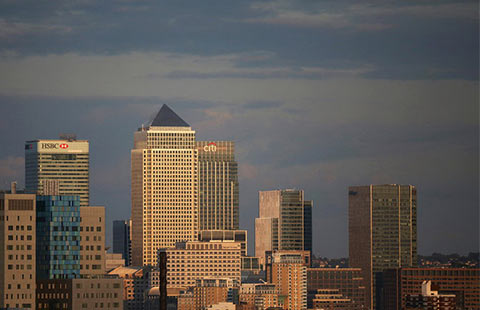China's central bank dismisses QE rumor
(chinadaily.com.cn) Updated: 2015-10-29 13:59After lifting the ceiling on deposit interest rates, the central bank will continue to release benchmark rates for a certain period, which can serve as an important reference for interest rate pricing for financial institutions. The period can be regarded as a transitional period for the further improvement of the management framework. Once a sound mechanism for rate setting, transmitting and regulating is established, the PBOC will naturally stop releasing the benchmark rates. Meanwhile, the bank will encourage financial institutions to lead to scientific and reasonable pricing and maintain fair and orderly market competition order through self-regulatory, while improving macro-prudential management and supervising and urging financial institutions to improve the ability of their independent pricing.
Q: Would you please give further clarification on the major concerns behind the rate cut and deposit reserve ratio cut announced on Oct 23?
A: The "double cut" is a reasonable and necessary policy adjustment in accordance with the changes of economic prices and liquidity. Price gauge remained low in September, therefore nominal interest rate should be lowered to keep real interest rate at a reasonable level, to reduce social financing cost and rally more supports to the real economy. As you know, CPI rose 1.6 percent year-on-year in September, which is 0.4 percentage point less than that of August. The benchmark rate adjustment, besides mainly based on the CPI changes, also takes account of other measures such as GDP deflators. Statistics show that the GDP deflator in the first three quarters is -0.3 percent, which is much lower than CPI. Moreover, the PPI in September fell 5.9 percent year-on-year and remained negative for 43 consecutive months. Therefore, it is reasonable and predictable to lower the benchmark interest rates with the downwards of the overall price.
The deposit reserve ratio cut are to address the liquidity gap resulted from the decrease of the funds outstanding for foreign exchange and to meet the normal liquidity needs for economic growth. A few years ago, because of the large inflows of foreign exchange, liquidity supply was excess and the deposit reserve ratio had to be increased under the circumstance. However, at present, the situation has changed. The funds outstanding for foreign exchange were reduced to a certain degree in the past few months. Although recently foreign exchange markets are expected to stabilize, and the effect on the liquidity should be neutral, while there are still uncertain factors which will change the funds outstanding for foreign exchange in the future. Besides, taxes should be put into the state Treasury in October, which will thus reduce liquidity. Therefore, at present, it is necessary to cut the deposit reserve ratio to release some of the liquidity and keep a reasonably adequate liquidity in the banking system. It needs to point out that the deposit reserve ratio cut only turns legal reserves into excess reserves and the total scale of the central bank's balance sheet hasn't been expanded.
There is a huge difference between the 'rates cut measures in China and QE by foreign central banks. The QE is adopted when the nominal policy rates touch zero and it is impossible to cut the real rates and increase monetary support to the economy under conventional measures. In such a situation, some countries have to take unconventional measures and directly expand their central banks' balance sheets through the purchases of certain amount of specified assets such as bonds. That is why such policy is called quantitative easing.
On the contrary, cuts on interest rates and deposit reserve ratio in china are evidently traditional and conventional monetary policy measures, which are undoubtedly not QE. China hasn't been faced with 'zero interest' and the nominal interest rates are still above zero. What's more, the deposit reserve ratio is relatively high. Therefore, at present time when greater monetary policy supports are necessary, interest rates and deposit reserve ratio instruments have their own using space. The deposit reserve ratio cut will not directly lead to the expansion of central bank's balance sheet and therefore should not be classified as unconventional QE measures.
This article is translated by Wu Hong.
- Nubia announces first eye-scan smartphone
- China's central bank dismisses QE rumor
- China's consumer credit service lacking: report
- Samsung Electronics posts double-digit growth in Q3 profit
- Want a butler at your home?
- S. Korea pushes for Chinese yuan hub with sale of yuan bonds
- Chinese IT giant offers smart grid solution to power companies in Africa
- Increase in rare earth prices will not affect global market, demand














